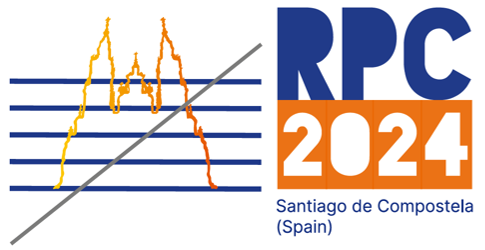Speaker
Description
Detailed Monte-Carlo simulations of the induction of signals in Resistive Plate Chambers (RPCs) remain a key tool for understanding their response, optimizing the detector geometry, and finding eco-friendly gas mixtures for applications in High Energy Physics (HEP) experiments. In this contribution, we will discuss recent developments in the Garfield++ toolkit that can be used for the simulation of Multi-gap RPCs (MRPCs); from avalanche modeling to signal induction in the presence of resistive elements or external impedance elements.
In Garfield++, the microscopic tracking of electrons follows particles from collision to collision, providing a detailed description of avalanche formation in the gas. Given the typically large number of charge carriers, a mixed method is used for a more efficient calculation of the detector’s response. This method retains microscopic electron tracking for the initial phase of avalanche development to accurately capture its initial fluctuations. Once the avalanche has reached a sufficient size, the implemented Lipmann-Riegler 1D grid-based method describes its further development. As the charge carriers traverse their trajectories, the induced signal on the electrodes is calculated.
Currents induced on grounded electrodes by moving charges can be obtained using static prompt weighting potential with the Ramo-Shockley theorem. However, the presence of resistive elements requires an extension of this theorem to capture the delayed component of the signal from the time-dependent reaction of the detector materials. In this case, the weighting potential becomes dynamic. In Garfield++, both analytical and Finite Element Method (FEM) approaches are available for calculating the static and time-dependent weighting potential of rectangular electrodes in MRPCs. For MRPCs, the numerical FEM methodology can account for the finite conductivity of the resistive plates and high-voltage electrodes. The focus will be on applying this approach to the case of MRPCs and discuss topics such as the contribution of the HV electrode to signal formation. In addition, the FEM strategy is applicable to complex detector layouts across resistive gaseous detector technologies, from RPCs to resistive Micro-Pattern Gaseous Detectors (MPGDs), and can in addition be applied to solid-state detectors.
